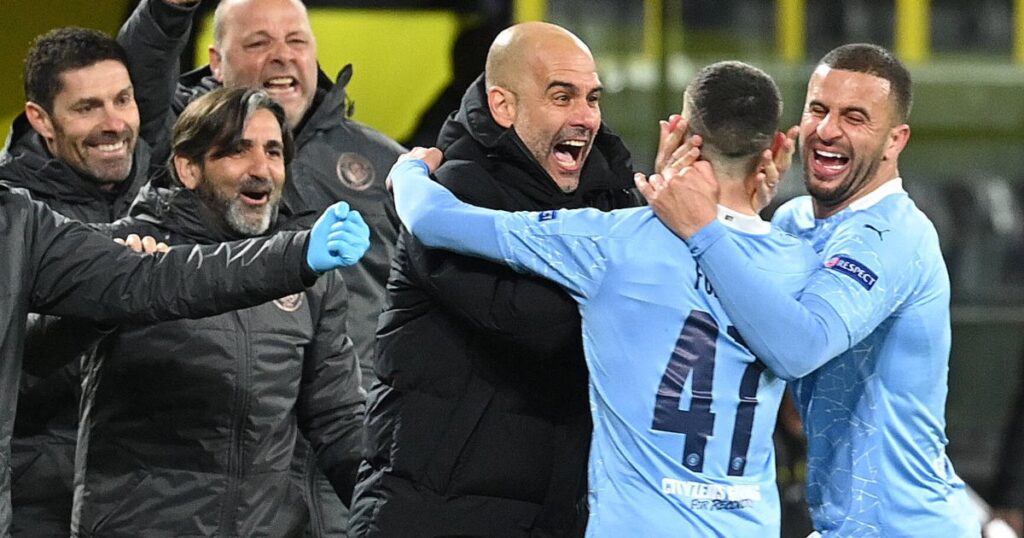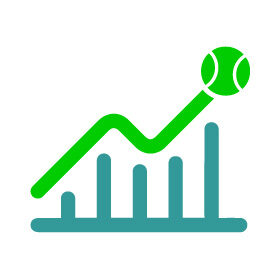Table of Contents
ToggleFrom the Sideline to the Trading Floor: Lessons from Pep Guardiola’s Winning Mentality
Pep Guardiola is considered one of the most innovative and influential coaches in the history of football. His game philosophy, based on ball possession, build-up play from the back, and high pressing, has not only revolutionized modern football but has also defined a new tactical standard globally.
His impact goes beyond his successes with Barcelona, Bayern Munich, and Manchester City: he has inspired an entire generation of coaches and changed the way football is played and analyzed.
But how much does Guardiola really affect his teams’ performances? Through the analysis of advanced data, we can evaluate his extraordinary contribution to the evolution of the game.
Possession and Build-up Play from the Back
Pep Guardiola never leaves anything to chance. Every move, every tactic is studied, reasoned, and based on the data he has available. He is not influenced by sudden emotions or external pressures. This is exactly what a successful sports trader does. It’s not just about calculating the odds of an event, but about maintaining a clear and disciplined mindset, without being overwhelmed by the enthusiasm of the moment or by losses. It’s easy to get caught up in the adrenaline, but a coach like Guardiola knows that discipline is what makes the difference.
In sports trading, just like in football, you always have to be ready to adapt. Guardiola is known for his ability to change the game in progress, reading the opponent and changing his strategy when necessary. Similarly, a trader must be able to react to market changes, adapting their bets based on new information and scenarios.
In football, Guardiola doesn’t just trust his feelings. He thoroughly studies every aspect of his teams and his opponents. He analyzes statistics, on-field behavior, strengths, and weaknesses. A good sports trader does the same. It is not enough to rely on “feeling”; it is essential to know how to read the data, analyze past performances, and continuously monitor the changes that occur during a match.
Tools such as software for analyzing odds or reading trends become fundamental for a trader who wants to reach Guardiola’s levels. The use of models like the WADM (Weight Adjusted Draw Margin) Matrix is similar to how Guardiola might analyze the position, ball possession, or individual performances of his players before making an important decision. The key is preparation. Knowing every possible scenario before it happens is what separates the professionals from the amateurs.
One of the most iconic aspects of “Guardiolism” is possession control. Teams coached by Guardiola have always maintained a ball possession percentage of over 60%, with Manchester City recording an average possession of 65.2% in the 2022/23 season, the highest in the Premier League.
Another key statistic is the number of line-breaking passes, i.e., passes that bypass the opponent’s pressure lines. Manchester City is one of the teams with the highest number of progressive passes, thanks to players like De Bruyne, Bernardo Silva, and Rodri. Added to this is ball recovery and organized pressing, which is another pillar of Guardiola’s game. The PPDA (Passes Per Defensive Action) indicator measures the intensity of pressing: the lower the value, the greater the intensity of the pressing. Looking at the data gathered during his experiences on the bench, we can note that:
- Barcelona 2010/11: PPDA 6.2
- Bayern Munich 2015/16: PPDA 5.8
- Manchester City 2022/23: PPDA 7.1
These numbers show how Guardiola’s teams are consistently among the most aggressive in high ball recovery, forcing opponents to make mistakes in the build-up.

Positioning and Spacing
The use of heatmaps highlights how Guardiola’s teams maintain a rational occupation of the field. Thanks to the use of inverted full-backs (e.g., Cancelo at City) and the rotation of positions, his teams create numerical superiority in key areas. This was also the concept behind the radical football evolution of Kimmich. The effectiveness of this approach is evident in the Expected Goals (xG), a metric that measures the quality of chances created. In the 2022/23 season, Manchester City recorded an average xG of 2.3 per game, the highest in the Premier League, demonstrating the ability to generate high-quality scoring chances.
A comparison between the teams pre- and post-Guardiola confirms his impact:
- Manchester City before Guardiola (2015/16): 66 points, 71 goals scored, 41 conceded.
- Manchester City with Guardiola (2022/23): 89 points, 94 goals scored, 33 conceded.
Similarly, several players, during the various seasons, have elevated their performance under his guidance:
- Kevin De Bruyne: key passes per game increased from 2.1 (2015) to 3.5 (2023).
- Joshua Kimmich: transformed from full-back to defensive midfielder at Bayern Munich.
- Lionel Messi: best scoring season in 2011/12 with 73 goals.
In essence, Pep Guardiola’s journey demonstrates how success in modern football is not the result of chance, but the result of a method based on study, innovation, and resource management. His game philosophy, based on ball possession and space control, has redefined tactical standards, inspiring an entire generation of coaches. Beyond the trophies, his impact is measured by his ability to adapt to the challenges of different leagues, always maintaining his own football identity intact. In an era where football is constantly evolving, Guardiola remains a benchmark, demonstrating that progress comes through intelligence, detail, and the constant pursuit of perfection.
When we think of Pep Guardiola, our mind immediately goes to football. But if we stop for a moment and reflect, we can see many similarities between his approach to the game and that of a successful sports trader. Risk management, game reading, and the ability to adapt quickly are characteristics that Guardiola puts into practice every time he is on the sidelines, and that every sports trader must have in their arsenal.
Risk Management: The Long-Term Tactic
Another crucial point that Guardiola has in common with an expert trader is risk management. In football, he knows when to push for the result and when to defend. Risk management in sports trading works in the same way: you should never risk too much in a single trade.
Losses are part of the game, but a trader, like Guardiola, must be able to get back on their feet after a defeat. This is the secret to longevity in both disciplines. Once you have established your limits and are aware of how to manage negative periods, you have the peace of mind of knowing that the next success is only a matter of time.
Preparing for Change: Being Flexible
Guardiola is a master at adapting to circumstances. If things don’t go as planned, he’s not afraid to change the game plan. This flexible approach is also key in sports trading. The market can be volatile, and just as a coach changes the formation during a match, a trader must be ready to revise their strategy in real time. No match (or transaction) is ever the same, and the ability to adapt to new information can make all the difference.
How to Apply Guardiola’s Mindset to Trading
Have you ever wondered what separates a coach like Guardiola from a successful sports trader? The answer is simple: preparation, discipline, and a winning mentality. If you want to make the leap from beginner to professional in sports trading, take example from Guardiola. Start with solid preparation, rely on data and statistics, and don’t be afraid to change course when the market gives you signals of change.
The key is to stay calm under pressure and continue to refine your strategy. If a coach like Guardiola can transform a football team into a winning machine, you too can transform your approach to sports trading into a winning strategy. And remember, it’s not just a matter of numbers, it’s also a matter of mentality. With discipline and flexibility, success is truly possible.





